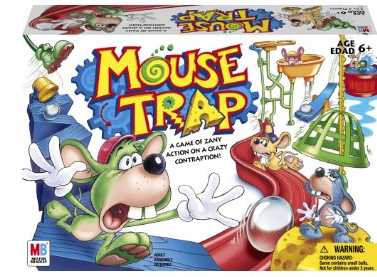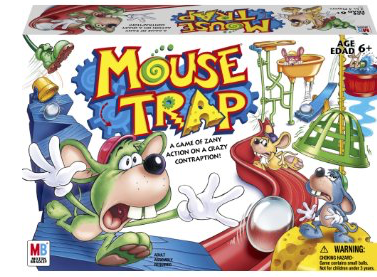Complex sales challenges: balancing capability and reputation
January 28, 2016

 What happens if you’re competing against a much less advanced solution from a company with a much better established reputation? It’s a situation that many expansion-stage SaaS businesses find themselves in. And unlike their longer-established competitors, every sale involves winning a new customer rather than upselling into the installed base.
What happens if you’re competing against a much less advanced solution from a company with a much better established reputation? It’s a situation that many expansion-stage SaaS businesses find themselves in. And unlike their longer-established competitors, every sale involves winning a new customer rather than upselling into the installed base.
Having the “best solution” is no guarantee of sales success, and every potential customer is weighing up the potential for transforming their business against the risk of the unknown. It’s a tough brief, and I’ve got enormous respect for the sales people who manage to master it. Here’s what I’ve learned from observing them in action…
Ralph Waldo Emerson was Wrong
Reply Waldo Emerson is (probably incorrectly, as it happens) frequently quoted as encouraging inventors to “build a better mousetrap, and the world will beat a path to your door”. Well, whether he said it or not, the sentiment is patently wrong. A few brave early adopters might be seduced by the new functionality, but the pragmatic majority of the market is going to hang around until the idea is much more widely proven.
Engaging Early Stage Buyers is Easier
Technology enthusiasts and early adopters are usually amongst the first to embrace new products and technologies, and they are where the first sales are typically made. It’s not unusual for expansion-stage companies to win most of their initial new business from this group, but this success can generate a false positive signal.
Early stage buyers are inherently less risk-averse. They are prepared to embrace new ideas because they believe it will give them a competitive advantage. They require fewer user references or similar proof points. They tend to be less strategically committed to established “big brand” vendors. They are a perfect target audience - but they only represent a finite proportion of the total market opportunity.
Dealing with Pragmatists
Sooner or later, the pool of early adopters dries up and vendors are forced to turn their sights towards the pragmatic buyers that represent the majority of every market. And that’s where the trouble starts. Because these buyers are less concerned with innovation than they are with avoiding risk. And they are often deeply embedded with established suite vendors.
Although they might express apparent interest your innovative solution and want to evaluate it at length, at the end of the day there is a real risk that no matter how much better your functionality, they are likely to be drawn back to the perceived safety and security of a proven solution from an established brand - often one they are already doing business with.
Bridging the Gap
Readers of Geoffrey Moore’s “Crossing the Chasm” will recognise a familiar theme here. If you’re to break away from what may be an already-saturated early adopter market, you’re going to have to establish a bridgehead in early majority territory. Let’s assume that your solution is capable of delivering tangible business benefit to these somewhat more conservative buyers. How do the most effective sales people in these situations qualify which accounts are worth their energy?
Here are a few clues to look for:
- Does the prospect have a track record of adopting point solutions to solve specific business problems, or are they the sort of organisation that prefers to implement a suite of integrated solutions, even if the functionality is less advanced? If the latter, you’ll probably lose.
- Does the prospect have a strategic corporate relationship with one of the major players - such as SAP or Oracle - who are promoting a solution (no matter how much less capable) in the same category as yours? If so, politics are likely to prevail.
- Is the problem you are solving genuinely critical to the prospect right now? Is it associated with a well-funded high priority corporate initiative that has the backing of the CEO? If so, your chances are improved. If not, they may just decide to wait.
- Is the business case for implementing your solution blindingly obvious to everyone concerned? Or is it just one of a number of competing projects, most of which are not going to get funded if budgets are tight. If so, the decision will probably slip.
- Have you managed to establish clear positive differentiation for your solution amongst the business sponsors who ultimately own the budget, or are you being primarily promoted by technology enthusiasts who lack any real power within the organisation? If the latter, power will prevail.
- Is your primary sponsor a proven mobiliser who has previously shown themselves capable of establishing a “coalition of the willing” amongst the stakeholders who will have to approve any decision? If not, it won’t matter how much they like you.
Sometimes it's better to walk away rather than lead the charge
If you uncover too many red flags, no matter how superior your solution, you are almost certain to lose - either to the incumbent vendor, or another major player, or to a decision to “do nothing” - and waste a great deal of effort in the process.
It doesn’t matter how superior your functionality is - if the environment is against you, you would be better off politely qualifying out early, and seeking out alternative opportunities where the conditions are more favourable.
It’s your choice: a hopeless and quixotic charge against the massed artillery of a much more powerful foe, or a nimble flanking movement into less well-defended territory. I think you know which General I’d rather follow…


Comments